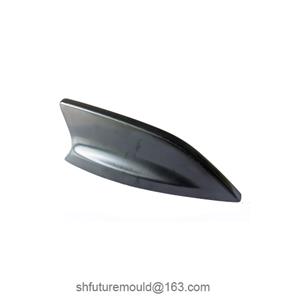Advantages of Standard Mold Bases in Injection Molds
Standard mold bases offer multiple advantages in injection molds, especially in enhancing production efficiency, reducing costs, and increasing mold versatility. Below are the key benefits of standard mold bases in injection molds:
1. Shortened Mold Manufacturing Cycle
Readily Available: Standard mold bases are mass-produced by specialized suppliers and can be procured at any time, significantly reducing preparation time for mold manufacturing.
Reduced Design Workload: The dimensions and structure of the mold base adhere to industry standards, allowing designers to focus solely on the core mold components (e.g., cavities and cores).
2. Reduced Mold Manufacturing Costs
Lower Prices through Mass Production: Standard mold bases benefit from economies of scale, making them more cost-effective.
Minimized Processing Costs: Complex machining of the mold base foundation is unnecessary, as standard components can be used directly.
3. Improved Mold Precision and Consistency
High-Precision Manufacturing: Standard mold bases are produced with professional equipment, ensuring high accuracy and minimal errors.
Avoidance of Error Accumulation: Using standardized parts for mold assembly minimizes dimensional deviations caused by machining or assembly errors.
4. Enhanced Versatility and Replaceability
Cross-Project Usability: With uniform dimensions, standard mold bases can be reused across different projects, reducing overall mold development costs.
Ease of Maintenance and Replacement: Standardized components (e.g., guide pins, bushings, and ejector pins) are easy to replace, ensuring quick repairs when parts are damaged.
5. Increased Production Efficiency
Modular Design: The modular structure of standard mold bases simplifies assembly, disassembly, and maintenance, reducing downtime.
Support for Quick Changeovers: Ideal for multi-variety, small-batch production, standard mold bases allow for flexible manufacturing through quick mold base replacements.
6. Reduced Technical Complexity
Lower Processing Threshold: Using standard mold bases, manufacturers can concentrate on machining core mold parts without needing extensive mold base design expertise.
Reduced Design Risk: Standard mold bases are industry-validated, ensuring reliable performance and avoiding issues caused by improper design.
7. Meeting Diverse Application Needs
Strong Adaptability: Whether for single-cavity molds, multi-cavity molds, or hot runner molds, standard mold bases can accommodate various requirements and provide a reliable foundation.
Flexible Expansion: Standard mold bases can be customized or augmented with additional functional components to meet specific demands.
8. Promoting Industry Standardization
Uniform Specifications: The widespread use of standard mold bases drives standardization within the mold industry, improving overall production efficiency and technical levels.
Facilitating International Collaboration: Compliance with international standards (e.g., DME, HASCO) ensures compatibility with global supply chains, making them suitable for export-oriented projects.




